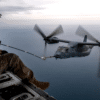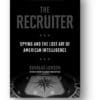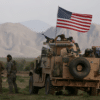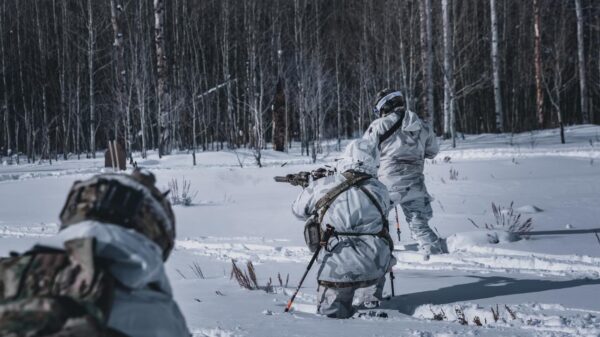Thomas R. Searle, Joint Special Operations University, Tampa, Florida, USA
ABSTRACT
The Trump and Biden administrations loudly proclaimed the end of the counterterrorism era and its replacement with a new era of competition. Following these new priorities, both administrations have slashed resources to support counterterrorism by friendly foreign nations. This is a serious strategic error because counterterrorism is not a distraction from competition but is instead at the center of competition. By slashing support to counterterrorism, the Trump and Biden administrations have started down a five-step path to disaster: (1) U.S. withdraws counterterrorism support to nation X; (2) terrorists destabilize nation X; (3) nation X turns to an authoritarian U.S. competitor for counterterrorism support; (4) nation X becomes more stable and less democratic; (5) nation X is locked into authoritarian governance and opposition to the U.S. Thus, one nation X at a time, slashing counterterrorism resources leads to exactly the anti-U.S. authoritarian world order the U.S. is trying to prevent.
Under the Trump and Biden administrations, U.S. national security priorities shifted dramatically and decisively away from counterterrorism (CT) (often described as countering violent extremist organizations [VEOs])[1] and toward strategic competition against authoritarian nation states, particularly Russia and China. This bipartisan shift is one of the few things that President Joe Biden, President Donald Trump, and their respective supporters, all agree on. Russia’s large-scale combat operations in Ukraine, starting in February 2022, seem to vindicate this shift since Russian aggression and potential future Chinese aggression are clearly greater threats to U.S. interests than terrorists.
Unfortunately, the dramatic spectacle of Russian firepower unleashed on Ukraine is distracting us from subtler forms of strategic competition. On closer examination it will become apparent that CT and strategic competition are not mutually exclusive. In fact, CT is a vital aspect of strategic competition and abandoning CT puts the U.S. on a five-step path to defeat in strategic competition with China and other authoritarian nation states.
We shall start by describing the five-step path to defeat, assess how far the U.S has gone down this path, and then develop recommendations to get off the path to defeat.
The Five-Step Path to Defeat in Strategic Competition
Step 1: The five-step path to losing in strategic competition begins with the U.S. (and the West more generally) withdrawing support for a nation in its fight against violent extremists. We will call the unfortunate U.S. partner nation X, since it could be any number of countries in Africa, Asia, Latin America, or the Middle East. Most governments in the developing world face some sort of violent opposition every day,[2] and while few of them are fully democratic, neither are they fully authoritarian. The U.S. government justifies the withdrawal of CT support from nation X based on the need to concentrate U.S. resources for competition with China, Russia, and authoritarianism more generally, and U.S. leaders imagine this justifies shifting resources away from countering VEOs.
Step 2: The withdrawal of support leads to the second stage where the terrorist threat to nation X increases since local VEOs continue, or increase their terrorist and insurgent activities, and the government of nation X responds less effectively due to decreased outside support. Note that the actual decrease in effectiveness and increase in threat need not be substantial, it only must change the level of confidence in the government and expectations about the future. The loss of outside support will make the government of nation X feel less confident and secure, and it will embolden the local terrorists and insurgents, and both sides will see even a small increase in terrorist success as confirmation that the future is looking brighter for the insurgents and darker for the government.
Step 3: The third step is when the government of nation X loses confidence that it can handle the threat on its own, recognizes that the U.S. (and the West) will not provide the assistance it needs, and turns to China (or another authoritarian state). Aid from authoritarian sources was already appealing in certain ways. For example, China often brags that its aid comes “with no strings attached” because it does not demand the kinds of human rights, accountability, and anti-corruption reforms that the U.S. and other Western nations typically require.[3] Thus, the temptation to look for support from the Chinese Communist Party (CCP) and other authoritarians was already significant, even before the West withdrew support.
Step 4: In step four, China (or another authoritarian power) answers the call and provides an authoritarian, CCP-style solution to the challenge posed by VEOs. This authoritarian solution might include facial recognition software, social credit scores, and legal “reforms” that address terrorism by outlawing all opposition. It will certainly include heavy-handed repression applied not only to the violent extremists, but to other forms of dissent as well. This combination of technology and technique helps convince the government of nation X that it can violently crush all opposition and that it attempts to do so. President John F. Kennedy famously said: “Those who make peaceful revolution impossible will make violent revolution inevitable.”[4] As predicted by President Kennedy, when the government of nation X responds violently to all opposition, it forces all opponents to join the violent extremists. The U.S. and other Western nations will respond to the violent authoritarian turn in nation X by further decreasing support and even placing diplomatic and economic sanctions on nation X that increase its dependence on China and force it further into the authoritarian camp.
Step 5: In the fifth and final step, the threat to nation X from terrorists and VEOs has receded, but the newly authoritarian government remains and refuses to return to its more-democratic, pre-crisis form. It retains its authoritarian character partly due to continuing Chinese (Russian, Iranian, etc.) support, partly due to continuing U.S. and Western hostility, but mainly because dictators intuitively understand what Alexis de Tocqueville pointed out back in 1856: “the most dangerous time for a bad government is usually when it begins to reform.”[5] De Tocqueville could have added that the worse the government, the greater the danger from reform, and the newly authoritarian government of nation X has gotten much worse through the five steps. By stage five, the government of nation X finds democratic reform unnecessary (since China and other authoritarian powers assist friendly dictators) and dangerous (as de Tocqueville pointed out) locking it into its new form: authoritarian, pro-China, and anti-United States.
The Trump and Biden administrations thought the shift away from CT would strengthen the U.S. in strategic competition with China, but it can instead put us on a five-step path to defeat in strategic competition. This path takes us from the current liberal, democratic, and U.S.-led world order to a new, authoritarian, CCP-led world order, one nation X at a time.
Is the U.S. on the Five-Step Road to Defeat?
The five-step road to an authoritarian world order is possible, since the world contains scores, perhaps hundreds of nation Xs in danger of heading down this path, but is it taking place and if it is, how far down this path has the world traveled? Let’s consider each step.
Step 1: Stage one is where the U.S. and other Western nations start shifting away from countering violent extremists overseas in a (shortsighted) effort to counter China, Russia, and other nation-state strategic competitors. This shift has been widely publicized and is undeniably underway. In the words of the Trump administration’s 2018 National Defense Strategy: “Inter-state strategic competition, not terrorism, is now the primary concern in U.S. national security.”[6] The top priorities of Mark Esper, as Trump’s Secretary of Defense, were often described as “China, China, China.”[7] Esper and Trump pushed for dramatic reductions in CT resources to facilitate the shift in focus to China.[8] The Biden administration endorsed and expanded this shift away from CT/countering VEOs, and toward strategic competition with China and Russia.[9] Biden completed Trump’s withdrawal from Afghanistan and continues to look for ways to shift resources away from CT and toward strategic competition with China and Russia.[10] The Biden administration is under continuing pressure to speed up the shift away from countering VEOs overseas to devote additional resources to the China problem.[11] Other Western powers, such as France, are following the U.S. example in places like the African Sahel region.[12] Russia’s full-scale invasion of Ukraine beginning in February 2022 has reinforced these trends by drawing U.S. and Western attention and resources into Eastern Europe and potentially leaving countless nation Xs outside Europe to fend for themselves.
Step 2: In stage two, the withdrawal of Western support leads to decreased local effectiveness against VEOs and expansion of the terrorist threat. This one is also underway. Afghanistan in 2021 was, of course, the poster child for local government collapse when Western support ended, but Afghanistan was exceptional. In most places, local government performance decreases more gradually and there is usually a significant time lag between the loss of outside support and any obvious increase in terrorist threat. However, recent global assessments of terrorism, including those published by the U.S. government, have noted the diffusion of terrorist organizations into more countries as the threat has “metastasized” in the words of President Biden.[13] According to one recent assessment “the global jihadi terrorist movement now has more fighters in more countries than ever before.”[14] While it is difficult to prove a causal connection in every case, it is at least a very unfortunate coincidence that the terrorists are fielding more fighters in more places at exactly the moment the U.S. and its allies are shrinking the breadth and depth of their support to CT. As more countries feel the terrorist threat, they will look for more CT assistance. If that assistance is not coming from the U.S. and other democracies, then they will look elsewhere.
Step 3: Stage three is where beleaguered governments turn to China, Russia, and other authoritarian sources of support. This stage is also well underway. China has been building security assistance programs in Africa and elsewhere for years, actively working to replace U.S. influence and security cooperation.[15] There is talk of future Chinese military bases in Mozambique and elsewhere in Africa, and Chinese support against local insurgents will certainly help those basing arrangements come to pass.[16] In the Pacific, the Government of the Solomon Islands announced in December 2021 that it had accepted a Chinese offer of riot control equipment and police trainers to assist the Solomon Islands Police in response to rioting there the previous month. In the words of the official announcement by the government of the Islands: they accepted the Chinese offer of assistance “mindful of the urgent need to strengthen Royal Solomon Islands Police Force capability and capacity to respond to future unrest.” [17] The expectation of “future unrest” suggests the government has limited interest in reforming to address the causes of the unrest and is instead turning to authoritarian solutions as China’s influence continues to grow.[18] (The Solomon Islands have no military forces making the police the only armed security force on the islands.)
The Russians, often under cover of the Wagner Group, have been even more aggressive than the CCP in replacing the West as a provider of counterterrorist assistance. Readers of this journal are already well aware of the Wagner Group, its connections to the Russian government, and its activities across three continents from articles by Tor Bukkvoll and Åse G. Østensen, and by Christopher Spearin.[19] Since those articles came out, the role of the Wagner Group and Russia has continued to increase. In Mali, where the French (with U.S. assistance) had long been the CT partner of choice, the Russians have largely replaced them.[20] Russian mercenaries from the Wagner Group have also conducted CT operations on behalf of the governments of Mozambique, the Central African Republic, Syria, factions in Libya, and elsewhere.[21] All this new and varied foreign CT experience will make Wagner Group and similar Russian forces even more capable of providing CT assistance—in the authoritarian model—to likeminded nations anywhere in the world.[22] The current war in Ukraine has forced Russia and the Wagner Group to refocus their efforts on Eastern Europe, but it is too early to tell how long that shift will last and whether China will fill any vacuum that might result. In considering the possibility of Wagner Group retrenchment, it is important to remember that the Wagner Group has a completely different business model from Western security force assistance. The Western model assumes that security force assistance represents a one-way transfer of resources from the U.S. (and/or other Western nations) to the receiving nation. The Wagner Group provides security assistance for a fee and turns a profit on its activities. The intensity of the Russo-Ukraine war in 2022 has forced the Wagner Group to shift its limited resources to Ukraine, but the quest for profit will probably draw Wagner back to Africa, the Middle East, and Latin America when the fighting in Ukraine becomes less intense.
Step 4: Stage four is where authoritarian assistance and an authoritarian approach to countering violent extremists turns the tide in favor of the government. Fortunately, this stage has not been reached in many places. Syria is the obvious success story for authoritarian assistance in countering violent extremists, but the Assad regime was not receiving CT assistance from the U.S. and other Western nations, so it falls outside the five-stage model. Other clear successes for authoritarian assistance replacing U.S. and Western assistance are not yet apparent. However, clear and objective proof that authoritarian methods brought success is not required. All that is required is for the government to believe its authoritarian approach worked, and the government will already be inclined to believe it made the right choices and that even its most authoritarian actions were both necessary and appropriate. If the government starts to waiver in its commitment to authoritarian approaches, there will be abundant Chinese and Russian propaganda encouraging it to stay on the authoritarian course. Thus, anything short of being overthrown will probably be regarded by the newly authoritarian government as proof of authoritarian effectiveness.
Step 5: Stage five is where an authoritarian approach to countering violent extremism locks in an authoritarian government hostile to the United States. For example, in Syria, the way Bashar al-Assad handled the 2011 protest movements was the defining moment for his regime and appears to have made reform impossible for at least a generation. Similarly, the way his father crushed the uprising in Hama in the 1980s helped define his regime. Authoritarian methods of countering opposition are not yet the global norm, but China, Russia, Iran, North Korea, and other authoritarian regimes are working to change those norms and democratic reform after a truly authoritarian response to violent extremism is extremely rare.
Clearly, the world has taken some steps down the five-stage road to an authoritarian world order led by the CCP, but there is still time to change course.
How Should the U.S. Change Course?
To solve a problem, one must first recognize that there is a problem, and then accurately define the problem. The Trump and Biden administrations correctly identified strategic competition with China and Russia as the gravest foreign policy challenges facing the nation, but they have been groping toward an accurate definition of the problem. The Trump administration recognized the direct threat from agents of the CCP, such as Chinese People’s Liberation Army, Chinese State-Owned Enterprises, and China’s Maritime Militia, but they did not embrace the governance aspect of strategic competition. They criticized the authoritarian nature of the CCP, but they did not embrace the need to advance democracy and counter authoritarianism generally. The Biden administration is getting closer. They correctly identified the strategic competition between the U.S. and China as part of a larger global competition between democratic and authoritarian governance. That realization helped them see the need to advance democracy and counter authoritarian governance globally. However, the Biden administration has thus far failed to recognize that CT and countering VEOs is a core function of government, that there are fundamental differences between democratic and authoritarian responses to terrorism and VEOs, and that how a government responds to the existential threat from violent extremists can define whether that government is authoritarian or democratic.
The U.S. approach to strategic competition and countering VEOs still assumes these are two unrelated problems and that the U.S. can remove resources from countering violent extremists without impacting strategic competition. This is an easy but fatal mistake. It is an easy mistake because the terrorists are not agents of Russia or the CCP and therefore appear to be a different and separate problem. Fatal because scores of countries are threatened by VEOs. Failing to help them in their hour of need concedes the competition for influence in those states to Russia and the CCP by forcing the threatened government to accept assistance from authoritarian sources. Authoritarian assistance will lead to authoritarian actions that will lock the government into an authoritarian mold, beholden to authoritarian patrons.
Accurately defining the challenge from the CCP and other authoritarians requires the U.S. to recognize that the way a nation responds to terrorism and other forms of organized extremist violence largely determines whether that nation is democratic or authoritarian. To compete with authoritarianism, the U.S. must not only advance democracy in principle, but also provide specific CT and counter violent extremism assistance, in the democratic mode, to threatened nations. This does not mean the U.S. must invest extravagant resources to compete everywhere. There will be places where the costs are too high, the rewards are too small, and the U.S. will have to concede the competition to the CCP and other authoritarian forces. However, this must be a conscious choice made with full understanding that withholding CT assistance will impact strategic competition with the CCP and other authoritarians.
Presidents Trump and Biden tell us the shift away from CT will help free up resources for strategic competition but abandoning CT support to imperfect democracies risks forfeiting the competition to the CCP one nation X at a time, guaranteeing exactly the authoritarian, CCP-dominated world order the U.S. is trying to prevent.
[1]In moving away from the George W. Bush administration’s Global War on Terrorism, the Obama administration also tried to correct Bush’s overreliance on the terms “terrorist” and “terrorist organization” by replacing them with “violent extremist organizations” (VEO) in most DOD documents and that trend has continued. For example, in place of a Global War on Terrorism the DOD now has a Global Campaign Plan to Counter Violent Extremist Organizations. In U.S. national policy documents outside DOD terms like “terrorism” and “violent extremism” are often used interchangeably. See, for example, President Joseph R. Biden, Jr., Interim National Security Strategic Guidance, March 2021, (Unclassified), https://www.whitehouse.gov/wp-content/uploads/2021/03/NSC-1v2.pdf.
[2]Various projects attempt to monitor the number and scale of ongoing terrorist and insurgent conflicts around the world. Two of the best known are the University of Maryland’s START (Study of Terrorism And Response to Terrorism) https://www.start.umd.edu/gtd/access/ and the Uppsala Conflict Data Program (UCDP) run by Uppsala University Department of Peace and Conflict Research, https://ucdp.uu.se/encyclopedia.
[3]For example: Xiaojun Li, “China is offering ‘no strings attached aid’ to Africa” The Washington Post, 27 September 2018, https://www.washingtonpost.com/news/monkey-cage/wp/2018/09/27/china-is-offering-no-strings-attached-aid-to-africa-heres-what-that-means/.
[4] President John F. Kennedy, Remarks on the first anniversary of the Alliance for Progress, 13 March 1962, https://www.goodreads.com/quotes/89101-those-who-make-peaceful-revolution-impossible-will-make-violent-revolution.
[5]This is sometimes referred to as the “Tocqueville effect” or the “Tocqueville paradox,” Evgeny Finkel and Gehlbach, Scott (16 July 2018); “The Tocqueville Paradox: When Does Reform Provoke Rebellion?” https://papers.ssrn.com/sol3/papers.cfm?abstract_id=3202013.
[6]Jim Mattis, Summary of the 2018 National Defense Strategy of the United States, (unclassified), 3. https://dod.defense.gov/Portals/1/Documents/pubs/2018-National-Defense-Strategy-Summary.pdf.
[7]Tom Rogan, “Defense Secretary Mark Esper: It’s China, China, China” Washington Examiner, 28 August 2019, https://www.washingtonexaminer.com/opinion/defense-secretary-mark-esper-its-china-china-china.
[8]Helene Cooper, Thomas Gibbons-Neff, Charlie Savage and Eric Schmitt, “Pentagon Eyes Africa Drawdown as First Step in Global Troop Shift: The deliberations stem from a push to reduce missions battling distant terrorist groups, and to instead refocus on confronting so-called Great Powers like Russia and China,” New York Times, 24 December 2019, https://www.nytimes.com/2019/12/24/world/africa/esper-troops-africa-china.html.
[9] President Joseph R. Biden, Jr., Interim National Security Strategic Guidance, March 2021, (Unclassified), 19, https://www.whitehouse.gov/wp-content/uploads/2021/03/NSC-1v2.pdf.
[10]Jim Garamone, “Official Talks DOD Policy Role in Chinese Pacing Threat, Integrated Deterrence” DOD NEWS, 2 June 2021, https://www.defense.gov/News/News-Stories/Article/Article/2641068/official-talks-dod-policy-role-in-chinese-pacing-threat-integrated-deterrence/.
[11]For example, the Biden Administration’s Global Posture Review was widely criticized for not including a more rapid and dramatic shift in forces away from counterterrorism and toward countering China in the Indo-Pacific. Jack Detsch, “‘No Decisions, No Changes’: Pentagon Fails to Stick Asia Pivot”, Foreign Policy, 29 November 2021, https://foreignpolicy.com/2021/11/29/pentagon-china-biden-asia-pivot/.
[12]Angela Charlton And Carley Petesch, “France to pull more than 2,000 troops from Africa’s Sahel” AP, 9 July 2021, https://apnews.com/article/europe-government-and-politics-france-e384891a63e6ac15c02177b2c095bf26.
[13] President Joseph Biden, “Remarks by President Biden on Afghanistan,” 16 August 2021. https://www.whitehouse.gov/briefing-room/speeches-remarks/2021/08/16/remarks-by-president-biden-on-afghanistan/.
[14]Katherine Zimmerman, “Al Qaeda & ISIS 20 Years After 9/11: Twenty years after the 9/11 attacks, the global jihadist movement has more fighters in more countries than ever before” Wilson Center, 8 September 2021, https://www.wilsoncenter.org/article/al-qaeda-isis-20-years-after-911.
[15] Will Reno and Maj. Jesse Humpal, “As the US Slumps Away, China Subsumes African Security Arrangements: Organizations created to fight terror groups after 9/11 are becoming conduits for Beijing’s surveillance and influence” Defense One, 21 October 2020, https://www.defenseone.com/ideas/2020/10/us-slumps-away-china-subsumes-african-security-arrangements/169431/.
[16]Dipanjan Roy Chaudhury, “Hydrocarbon rich Mozambique a future military base for China?” The Economic Times of India, 16 September 2021, https://economictimes.indiatimes.com/news/defence/ hydrocarbon-rich-mozambique-a-future-military-base-for-china/articleshow/86250224.cms? utm_source=contentofinterest&utm_medium=text&utm_campaign=cppst.
[17]Andrew Greene, “Solomon Islands accepts Chinese offer for riot police help” ABC News, 23 December 2021, https://www.abc.net.au/news/2021-12-24/solomon-islands-accepts-chinese-offer-for-riot-police-help/100724296.
[18]Michael E. Miller, “China’s growing reach is transforming a Pacific island chain” Washington Post, 11 August 2022, https://www.washingtonpost.com/world/2022/08/11/solomon-islands-china-australia-pacific/.
[19]Tor Bukkvoll and Åse G. Østensen, “The Emergence of Russian Private Military Companies: A New Tool of Clandestine Warfare” Special Operations Journal, 2020, Vol. 6 Issue 1, 1-17; and Christopher Spearin, “Russian Private Military and Security Companies and Special Operations Forces: Birds of a Feather?” Special Operations Journal, 2021, Vol. 7, Issue 2, 152-165.
[20] “At UN, Mali army-appointed PM slams France, praises Russia ties,” Al Jazeera, 24 September 2022, https://www.aljazeera.com/news/2022/9/24/mali-denounces-france-salutes-russia-at-un; and Mucahid Durmaz, “Talk of Wagner mercenary deal shines light on Mali power politics: Possible deal with private security firm reflects ongoing political shift in Mali and changing dynamics in its ties with two powers, Russia and France” Al Jazeera, 21 September 2021. https://www.aljazeera.com/news/2021/9/21/talk-wagner-mercenary-deal-shines-light-mali-power-politics.
[21] Tim Lister and Sebastian Shukla, “Arrival of Russian Wagner mercenaries in Mali condemned by European governments” CNN, 24 December 2021, https://www.cnn.com/2021/12/24/africa/russia-mercenaries-mali-intl/index.html.
[22]Benjamin Arbiter and Kurt Carlson, “The Changing Face of Russian Counter-Irregular Warfare” War on the Rocks, 21 December 2021, https://warontherocks.com/2021/12/the-changing-face-of-russian-counter-irregular-warfare/?utm_source=WOTR+Newsletter&utm_campaign=01e304c4e1-EMAIL_CAMPAIGN_10_30_2018_11_23_COPY_01&utm_medium=email&utm_term=0_8375be81e9-01e304c4e1-83315199.











